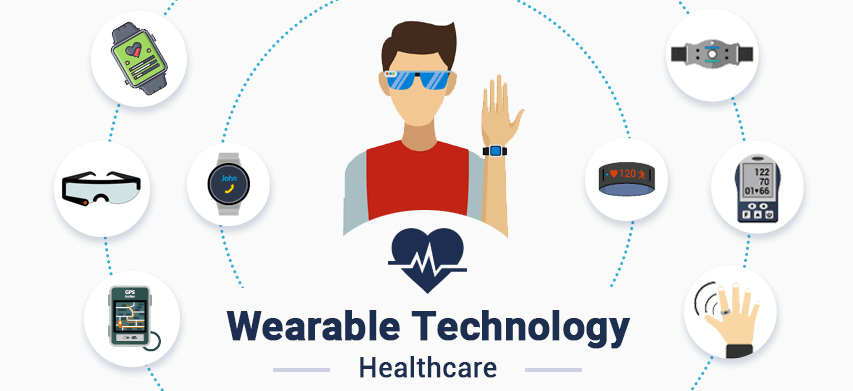Wearable technology, once a niche market, has evolved into a ubiquitous part of our daily lives. From smartwatches to fitness trackers, the landscape of wearable tech is continually expanding, offering a myriad of benefits and challenges.
Types of Wearable Technology

Smartwatches have become more than timekeeping devices, integrating features like fitness tracking and notifications. Fitness trackers have revolutionized the way we monitor our health, providing real-time data on our physical activities. Augmented Reality (AR) glasses and smart clothing are pushing the boundaries of immersive experiences and personalized fashion.
Advantages of Wearable Technology
The advantages are compelling. Wearables enable constant health and fitness monitoring, offering insights into our well-being. Their convenience and accessibility make them indispensable in our fast-paced lives. With hands-free functionality, tasks become seamless, enhancing overall efficiency.
Challenges and Concerns
However, this tech revolution isn’t without its challenges. Privacy and security concerns loom large, as wearables collect sensitive data. Battery life remains a stumbling block, affecting user experience. Integrating technology into fashion design poses the challenge of finding a harmonious balance.
Wearable Tech in Healthcare
In healthcare, wearables have taken center stage, facilitating remote patient monitoring and introducing smart fabrics for medical applications. The implications for preventive care and early detection are profound.
The Impact on Lifestyle
Wearable technology isn’t just about gadgets; it’s about transforming lifestyles. From managing fitness routines to streamlining daily tasks, wearables are integral to modern living.
Wearable Tech in the Workplace
In the professional realm, wearables are enhancing productivity and safety. From monitoring employees’ well-being to augmenting task efficiency, wearables are redefining the workplace dynamic.
Technological Innovations in Wearables
The integration of biometric sensors and artificial intelligence is propelling wearables into the realm of personalized and predictive technology. Devices are becoming more attuned to user preferences and behaviors.
The Future of Wearable Technology
As technology continues to advance, wearables will likely follow suit. Emerging trends such as health-focused wearables and augmented reality applications hint at an exciting future. The potential developments in materials and form factors may redefine how we perceive and interact with wearables.
Consumer Adoption and Market Trends
Demographically, the adoption of wearables spans across age groups. The market is witnessing exponential growth, with an increasing number of companies entering the fray. Understanding consumer preferences and market dynamics is crucial for staying competitive.
Comparative Analysis of Popular Wearables
Pitting giants like the Apple Watch against the Fitbit reveals nuances in design, features, and ecosystem integration. Similarly, a comparison of various AR glasses provides insights into the evolving landscape of augmented reality.
Impact on Social Interaction
Connectivity and communication are at the core of wearables. While they enhance our ability to stay connected, wearables also introduce social challenges. Balancing the benefits with potential drawbacks is essential for a nuanced understanding.
Environmental Considerations
The rapid turnover of electronic devices raises concerns about electronic waste. Sustainable design practices and recycling initiatives are critical for mitigating the environmental impact of wearables.
DIY Wearables and Maker Culture
The democratization of technology has given rise to DIY wearables. Hobbyists now have the tools to experiment and innovate, contributing to a community-driven culture of continuous improvement.
Summary
In conclusion, wearable technology has transcended its initial novelty to become an integral part of contemporary life. The journey from basic fitness trackers to sophisticated AR glasses exemplifies the dynamic nature of this field. As we continue to witness innovations, wearables will undoubtedly play a pivotal role in shaping the future.
FAQs About Wearable Technology
Are Wearables Safe to Use?
Wearables are generally safe, but users should be mindful of privacy settings and data security.
Do Wearables Work for All Age Groups?
Yes, wearables cater to various age groups, with features tailored to different needs.
How Long Do Wearable Batteries Last?
Battery life varies among devices. It can range from a day to several weeks, depending on usage.
Can Wearables Replace Traditional Health Monitoring Devices?
Wearables are increasingly capable of monitoring health metrics, but consult with healthcare professionals for serious conditions.
What’s the Environmental Impact of Wearables?
Electronic waste is a concern, but some companies are adopting sustainable practices to minimize environmental impact.
